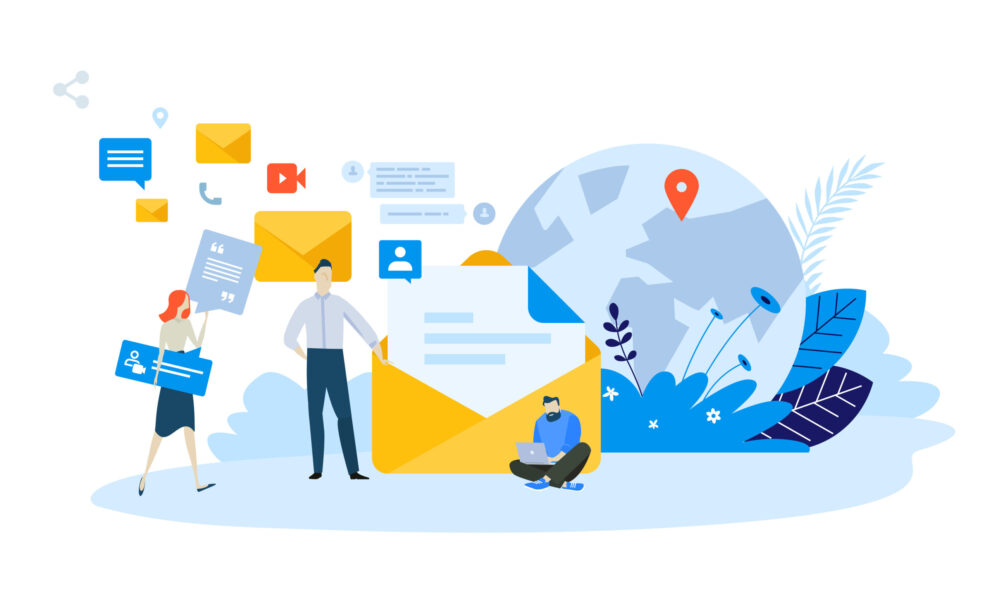Optimize your Email Deliverability: Content

Summary
In this blog series, I’m tackling email deliverability broken up into three areas—your audience, content, and the tech stuff. This month, we focus on your content: the words, images, format - everything you are putting in the email that you are hoping your audience receives and reads.
By Lisa Heay, Director of Business Operations at Heinz Marketing
In this blog series, I’m tackling email deliverability broken up into three areas—your audience, content, and the tech stuff. Follow along each month and optimize your email deliverability from the ground up.
Last month I covered how to optimize your email deliverability by carefully building your audience and segmenting your lists – check it out.
This month, I’m back with the next part of Email Deliverability – your content: the words, images, format – everything you are putting in the email that you are hoping your audience receives and reads.
Email Deliverability
Email deliverability refers to the ability of an email to reach its intended recipient’s inbox without being blocked or marked as spam.
Your ultimate goal should be to land in the recipient’s inbox – not the promotions tab or worse yet – spam. Emails that go to the promotions or other tab typically have 50% less opens than messages that land in the inbox or primary tab.
This is not just a marketing operations problem—your whole demand generation team is responsible for ensuring your emails are delivered.
The Elements & Impact of Email Content
It’s important to get the text, images, and other elements that make up an email right, as the quality of your email content can have a big impact on whether or not your emails are delivered to the inbox and read by your subscribers.
In an April 2022 article from Litmus, Email Deliverability: What It Is and Why It Matters, it explains that the quality of your email content is one of the most important factors that affects email deliverability. If your emails are not relevant or interesting to your recipients, they are more likely to be marked as spam or deleted. Conversely, if your emails are well-written and engaging, they are more likely to be delivered to the inbox and read.
Here are some of the key elements of email content and how they can affect your results:
Subject line
The subject line is the first thing people see when readers receive your email, so it’s important to make it count. Make sure it’s clear, concise, and relevant to the contents of the email to entice your reader to open. A well-written subject line can increase your open rate by up to 50%.
In addition, make sure to avoid spammy or misleading language that might cause the email to be flagged as spam.
Preheader text
The preheader text is the text that appears after the subject line in the preview pane. It’s a great opportunity to give people a quick glimpse of what your email is about and why they should open it. The preheader text can help you increase your open rate by up to 25%.
Body copy
The body copy is the main text of your email. This is where you’ll share your message and provide value to your subscribers. It’s what will prompt your readers to take action.
But email service providers will look for percent of promotional language and SPAM phrases within copy to determine inbox placement.
Here are some tips for writing effective email content that will help you reach your email marketing goals:
- Be clear and concise: People are busy and they don’t have time to read long, rambling emails. Get to the point quickly and don’t waste their time.
- Be relevant: Make sure your content is relevant to your subscribers’ interests. If you’re not sure what they’re interested in, ask them!
- Be engaging: Use interesting language and visuals to keep people engaged. If your content is boring, they’ll just delete it. You have only a few moments – typically around 2-3 seconds – to capture someone’s attention when they open your email.
- Be personal: People are more likely to open and read emails that are personal to them. Use their name, refer to their interests, and make them feel like you’re talking to them directly.
- Be professional: Use proper grammar and spelling, and avoid using slang or informal language. But professional does not have to mean stiff and boring. Read your email from your reader’s perspective. Is your copy engaging? Is it urging you to take action?
In an article by HubSpot, 29 Email Deliverability Tips You Must Know in 2022, it emphasizes that email content plays a significant role in email deliverability and provides similar recommendations like:
- Keep the subject line concise, specific, and relevant to the email content.
- Avoid using spam trigger words and phrases.
- Customize the email content and avoid using generic or duplicate content.
- Use a conversational tone and personalize the message to the recipient.
- Avoid using excessive capitalization, punctuation, and symbols in the email content.
- Don’t use large font sizes or bright colors that may appear spammy.
Images
Relevant images can make your emails more visually appealing and can help to break up large blocks of text. They can also be used to showcase products, highlight promotions, or reinforce your brand identity.
However, there can be a downside to images in emails. Some email clients may block images by default, so it’s important to have a balance of text and visuals in your emails.
In addition, statistically there is a higher chance your emails will be flagged as promotion with images. Pay attention to image to text ratio. For every image that is used, there needs to be a corresponding amount of text. A study by Constant Contact found that click-through rates perform best among emails with three or fewer images.
Additionally, using too many images or large image files can slow download times, which can negatively impact engagement. If it takes time and space to load, Gmail will deprioritize your emails. And if an image takes up 70% of the above the fold space, you might end up in the dreaded promotions tab.
Links
Links can help you drive traffic to your website or other online properties. When you include links in your email, be sure to use clear and concise anchor text that tells people what they can expect when they click through.
Keep in mind that the number of links, number of link destinations, and link copy can also affect how email platforms view your emails.
Test your emails
How do you know if you are navigating all these rules around email content successfully? You need to test each and every email you send to determine if you have a technical problem or a content problem. Testing before you send allows you to make tweaks to your email so that you can do everything possible to land in the main inbox.
One way to test is to add multiple email platform accounts to a test list to determine where your message lands in each inbox. Gmail, Outlook, Yahoo – if you have multiple addresses, add them to your list to see where that email lands when it reaches you. If you’re landing in spam or the promotions tab, refer to the best practices above to make tweaks to your email and test again.
There is also a free tool called Mail-tester.com that tests the spammyness of emails. Mail-Tester analyzes your email and generates a report that shows you how likely it is to be delivered to the recipient’s inbox. It also highlights any issues that may be affecting deliverability, such as spammy content or technical set up issues that we’ll talk about next month, and makes recommendations for fixing those issues.
Wrapping Up
Overall, email deliverability is a multifaceted issue that depends on several factors, including content, copy, format, and technical settings. By optimizing each of these elements, marketers can improve their email deliverability and ensure that their messages reach their intended audience.
Check back next month for the next area of focus -the tech that powers it all, and tips to optimize it for email deliverability.


